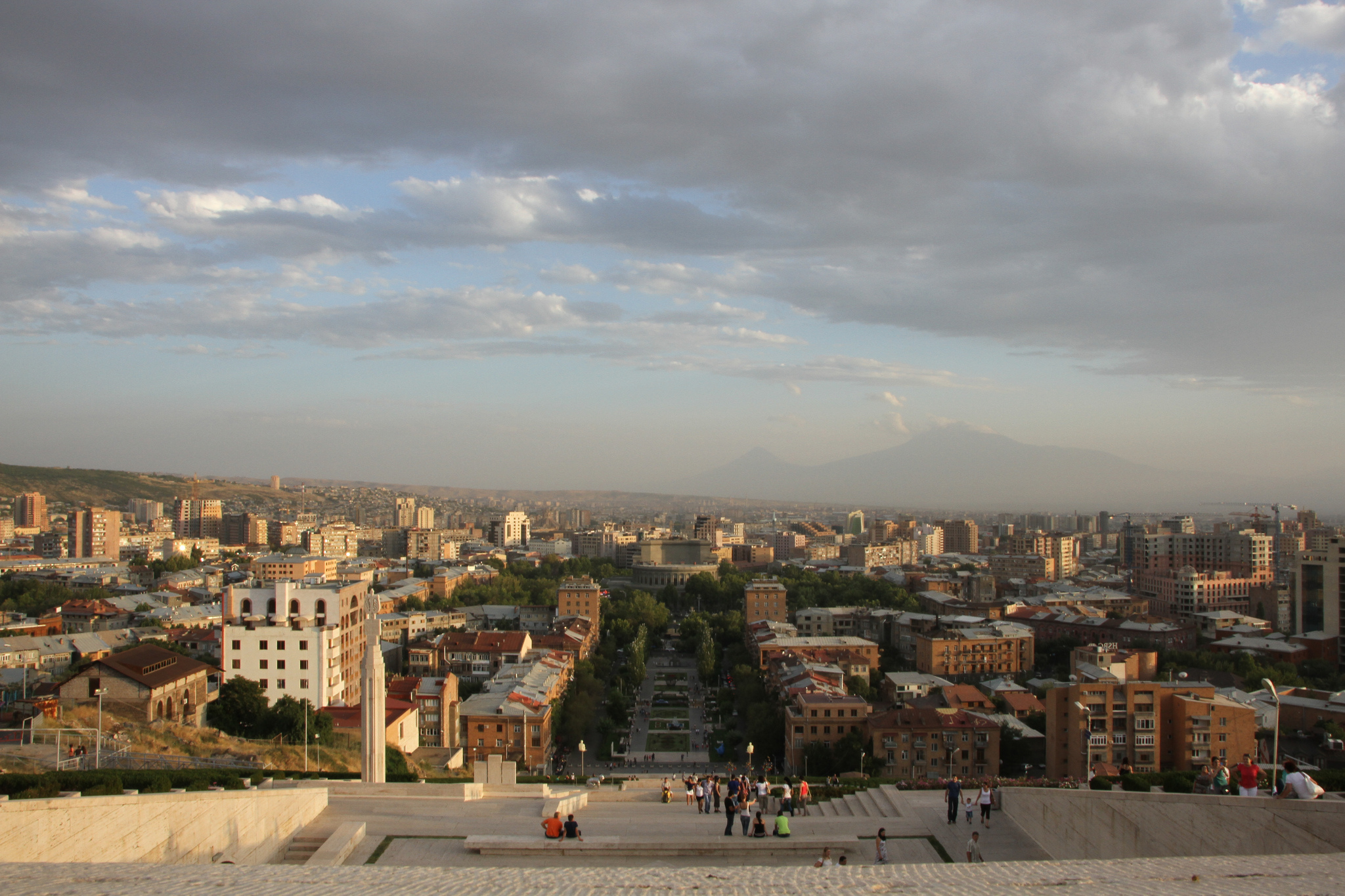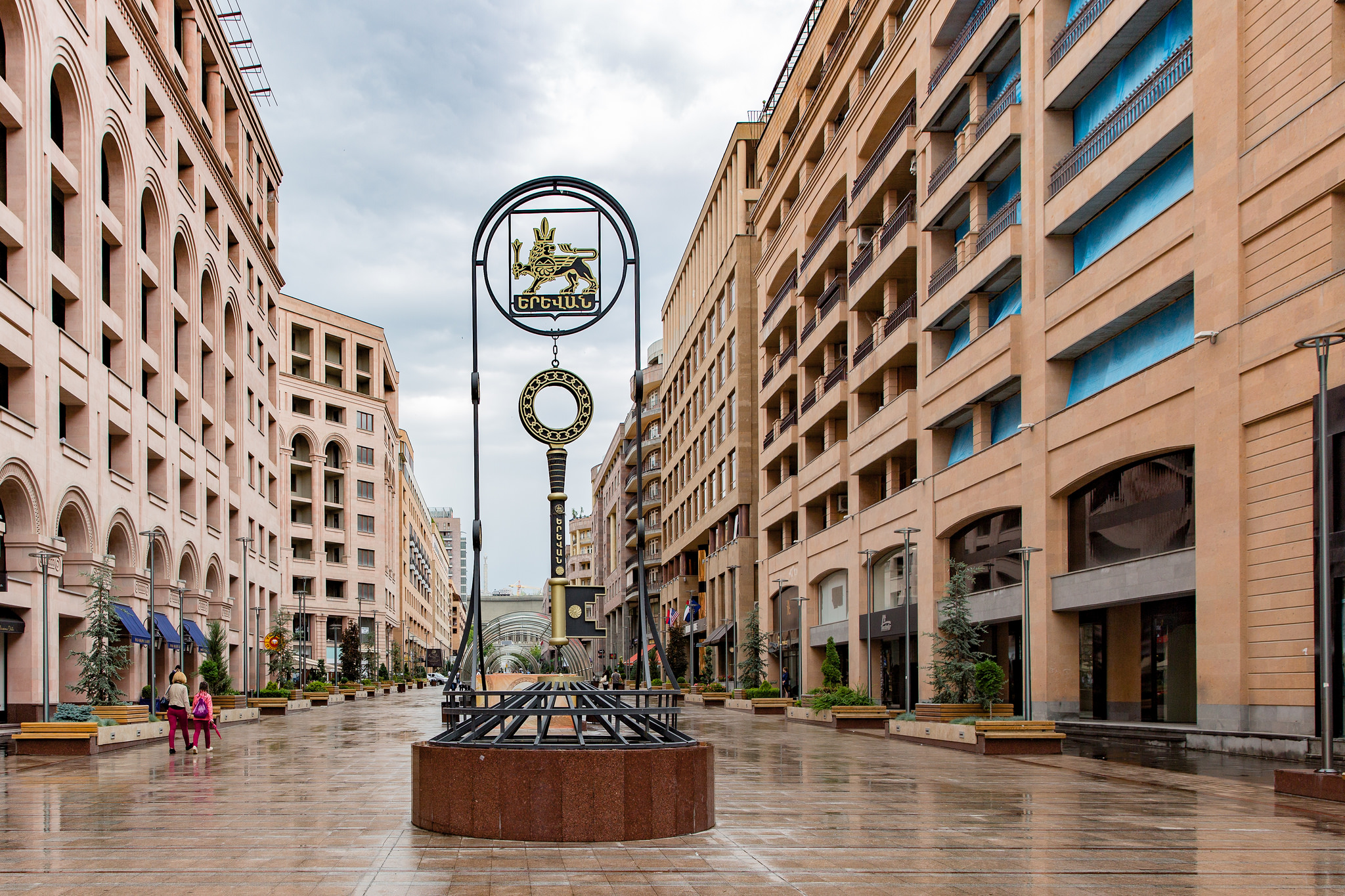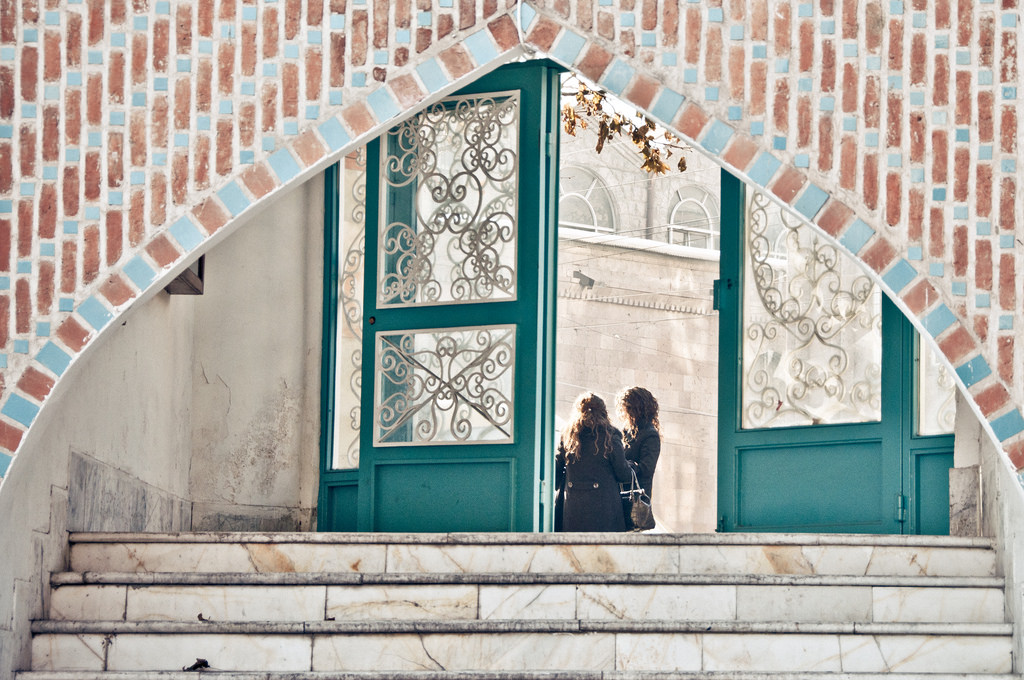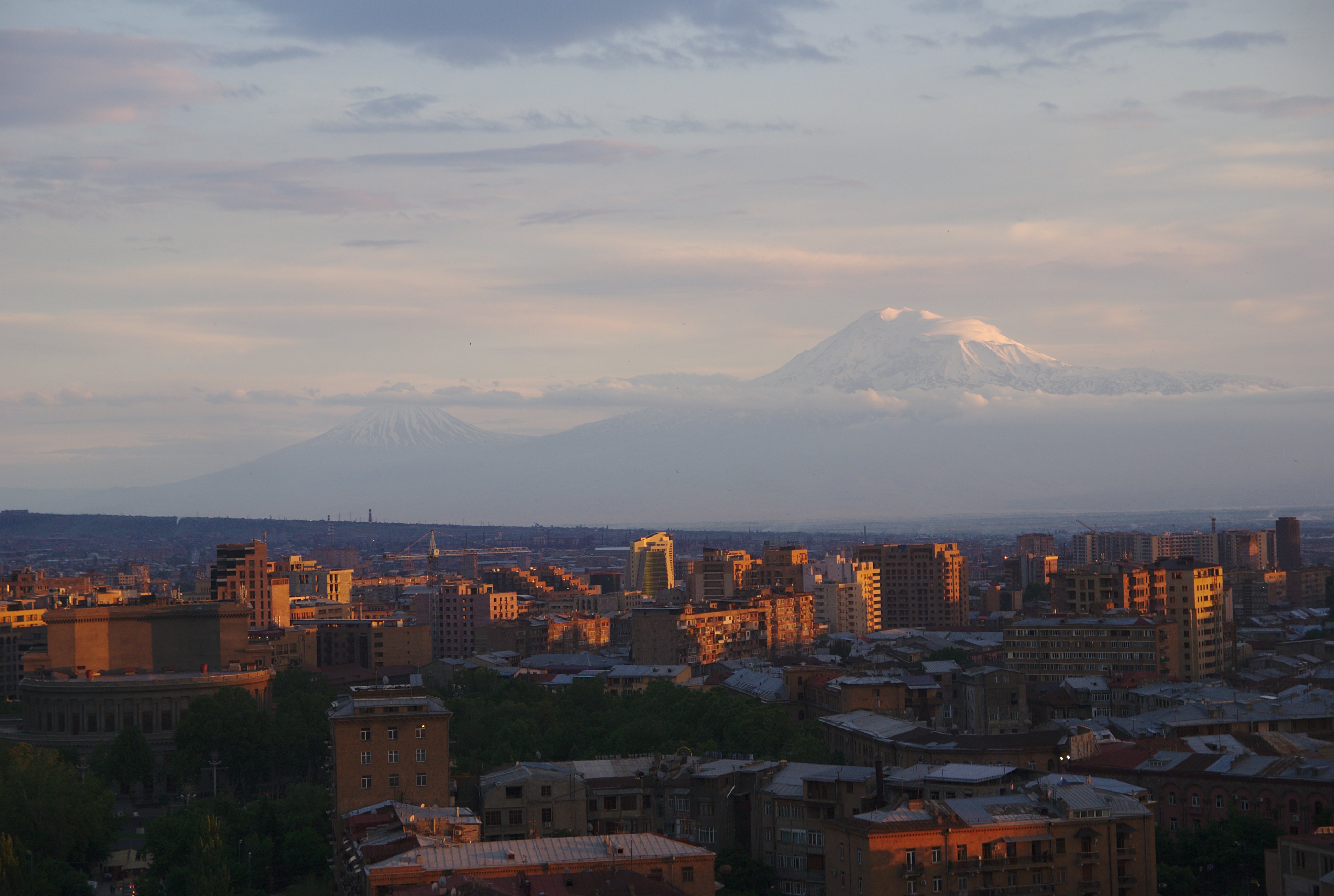-

Yerevan is the capital and largest city of Armenia. Photo via Flickr, Marco Zanferrari.
-

The city’s wide boulevards were modeled on those of Paris. Photo via Flickr, Dmitry Karyshev.
-

The steps of a mosque in Yerevan. Photo via Flickr, Marco Fieber.
-

The snow-capped Mount Ararat can be soon looming out of the city skyline. Photo via Flickr, ogannes.
Discovering Yerevan
A guide to the Berlin of the Caucasus.
“Tbilisi may be the Prague of the Caucasus,” Raffi Elliot scoffs, “but Yerevan is the Berlin.” We are sitting in Blackberry, a low-lit wood-paneled cocktail bar in a converted art nouveau building on Yerevan’s central Abovyan Street. It too, Raffi (a local journalist who also works at Yerevan’s Impact Hub) tells me, is a copy of one constructed by the same architect in Tbilisi: just a half-hour flight away.
In recent years, Georgia—Armenia’s northern neighbour—has received the lion’s share of international attention. Its bohemian capital, Tbilisi, with its cobblestoned streets and splintering wooden balconies, is frequently covered by glossy travel magazines, its relentlessly glamourous nightlife scene scoring mentions in The Guardian and Vogue. But the Soviet-era boulevards of Yerevan, a city of pale pink limestone and brutalist tower-blocks in the dizzying shadow of Mount Ararat, have largely remained undiscovered by mainstream tourism: most of the travellers who come to Armenia are still diaspora Armenians looking to get in touch with their ancestral roots, not discover a hot new nightclub.
But Raffi likes it that way.
Yerevan may not be as immediately glamorous as Tbilisi. But what Raffi calls Yerevan’s “DIY” aesthetic—ramshackle bars that open in somebody’s basement or living room and spread by word of mouth to the ferociously creative, often foreign-educated members of Yerevan’s young urban intelligentsia—keeps the people who fall in love here coming back. The anarchic aesthetic of these hotspots, however, often come with a less-than-efficient approach to bookkeeping, and a cultural tendency towards “instant gratification” can make developing sustainable business hard. Raffi tells the story of one local bar that got so successful that its landlord instantly jacked up the rent, only to close immediately after under the financial strain.
Still, Raffi says, Yerevan always has its current crop of places. He takes me from the central, elegant Opera district—where boutique hotels like The Grand Hotel Yerevan (formerly the Soviet Golden Tulip Hotel, still decorated with Soviet-style murals of traditional Armenian folktales) stand overlooking unsettling contemporary sculptures of arachnids, to what Raffi calls Yerevan’s “Williamsburg”, just a 10-minute walk away, clustered around Martiros Saryan Street.
Yerevan, a city of pale pink limestone and brutalist tower-blocks in the dizzying shadow of Mount Ararat, has largely remained undiscovered by mainstream tourism
He points out each of his favorite haunts as we pass them, each one relatively recently opened. There’s the Calumet Ethnic Lounge Bar, one of the first places in Yerevan to play international and world music. There’s the no less cosmopolitan wine bar Tapastan, a mash-up of European and Caucasian cuisine: the fusion menu features not just tapas but international small-plate alternatives: Venetian cicchetti, Armenian patarnar.
But Yerevan’s ramshackle charm isn’t limited to its nightlife. There’s the café scene, of course—when Yerevan was constructed as a modern city, at the turn of the 20th century, its wide boulevards were modeled on those of Paris, and to this day the city’s main thoroughfares are lined with Parisian-style outdoor café terrasses. But there is also the riotously strange Cafesjian Center for the Arts, a contemporary art museum located within the reconstructed Soviet-era Cascade Monument, a dreamlike labyrinth of outdoor staircases and gardens, interspersed with surreal sculptures. Outside the city centre, there is the no less phantasmagoric museum of Armenian auteur and filmmaker Sergei Parajanov, whose colour-drenched and whimsical aesthetic suffuses every prop and collage-filled room in this tiny, historic house (Friday nights, the museum doubles as a hangout for Yerevan’s hipsters). Everything, I find, is a little bit off-kilter: endearingly, beautifully strange.
But outside Yerevan’s city center, traditional Armenian life goes on. The next morning, Raffi and I drive to the first-century pagan Garni Temple, thirty minutes away. The only major site of pre-Christian Armenia—the country was the first in the world to convert to Christianity in 324—the gargantuan, colonnaded Hellenistic-style temple stands at the snow-capped edge of a cliff. Outside, old men sell wolf pelts and taxidermy birds, women in stalls sell pomegranate wine in makeshift jugs.
Today is a special day, I learn. It’s the vernal equinox—the day that Armenia’s few remaining pagans celebrate the New Year. (Attempts to reconstruct Armenia’s pre-Christian traditions first gained popularity in late days of the Soviet Union, where they doubled as a kind of anti-Soviet nationalist resistance). Old men in traditional caps are waiting at the temple steps; young girls in national dress are preparing the steps of a dance.
A group of young men in black skinny jeans with hipster beards arrive with an enormous sound system, along with a sacrificial goat (Neo-paganism, I learn, is as popular with young countercultural Armenians as it is with elderly locals). Bearded men in ceremonial robes, marked with the infinity symbol associated with the Armenian pagan pantheon, ascend the temple steps, along with the ritual objects—a tree, a circular loaf of bread—associated with the New Year.
The music plays: a mashup of traditional music and Eastern European-style electronica. The men, old and young alike, begin to sing in praise of Anahit, the water goddess, and the war god Vahagan.
The young men take out their phones, start snapping photos. One records the songs on video. The women start to dance.
The music plays on.
_________
Never miss a story. Sign up for NUVO’s weekly newsletter.




